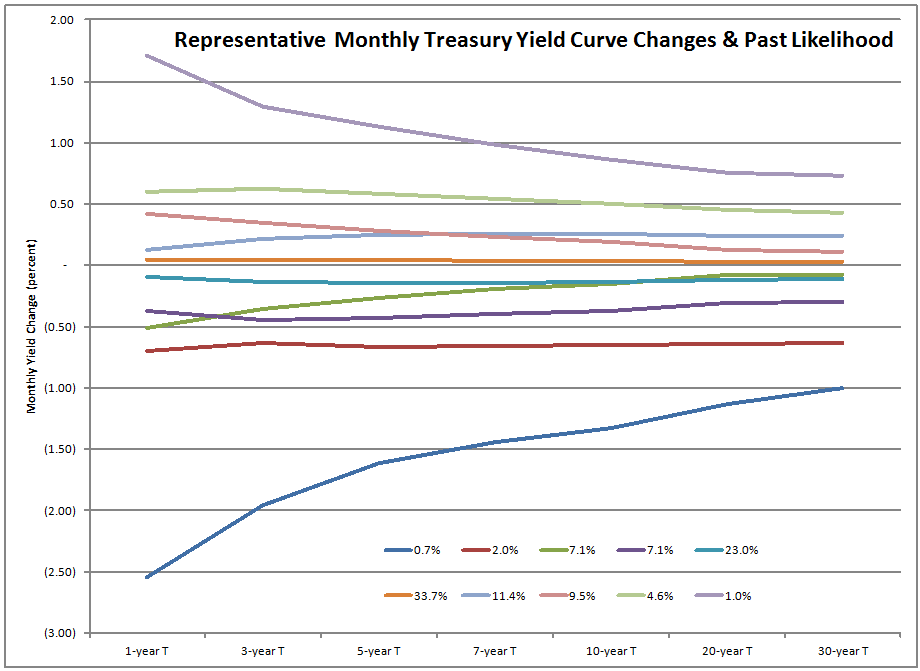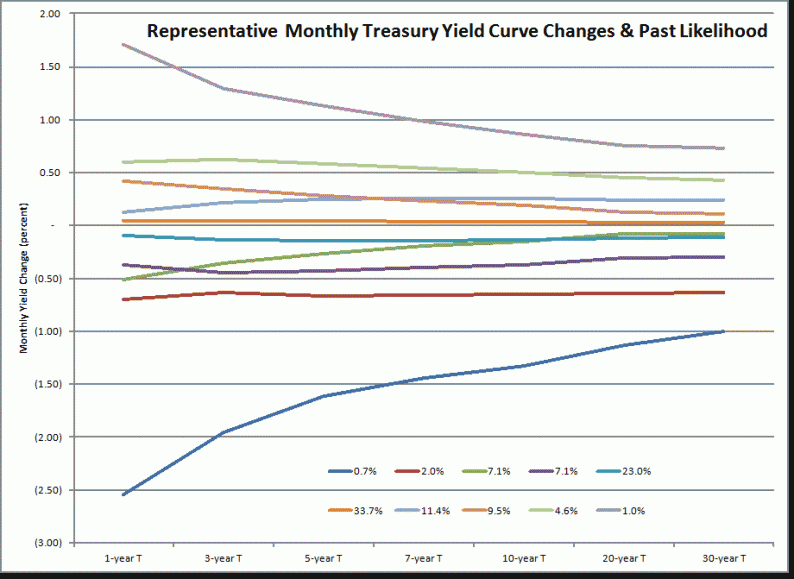I’m a very intellectually curious person — I could spend most of my time researching investing questions if I had the resources to do that and that alone. This post at the blog will be a little more wonky than most. If you don’t like reading about bonds, Fed Policy, etc., you can skip down to the conclusion and read that.

This post stems from an investigation of mine, and two recent articles that made me say, “Okay, time to publish the investigation.” The investigation in question was over whether yield curves move in parallel shifts or not, thus justifying traditional duration [bond price interest-rate sensitivity] statistics or not. That answer is complicated, and will be explained below. Before I go there, here are the two articles that made me decide to publish:
The first article goes over the very basic idea that using ordinary tools like the Fed funds rate, you can’t affect the long end of the yield curve much. Here’s a quote from Alan Greenspan:
“We wanted to control the federal funds rate, but ran into trouble because long-term rates did not, as they always had previously, respond to the rise in short-term rates,” Greenspan said in an interview last week. He called this a “conundrum” during congressional testimony in 2005.
This is partially true, and belies the type intelligence that a sorcerer’s apprentice has. The full truth is that long rates have a forecast of short rates baked into them, and reductions in short term interest rates usually cause long-term interest rates to fall, but far less than short rates. There are practical limits on the shape of the yield curve:
1) Interest rates can’t be negative, at least not very negative, and if they are negative, only with the shortest highest quality debts.













Leave A Comment